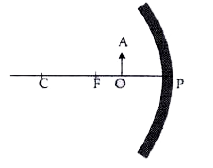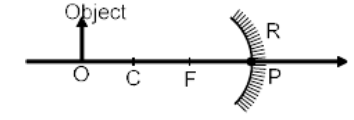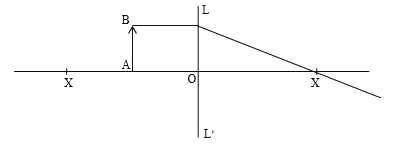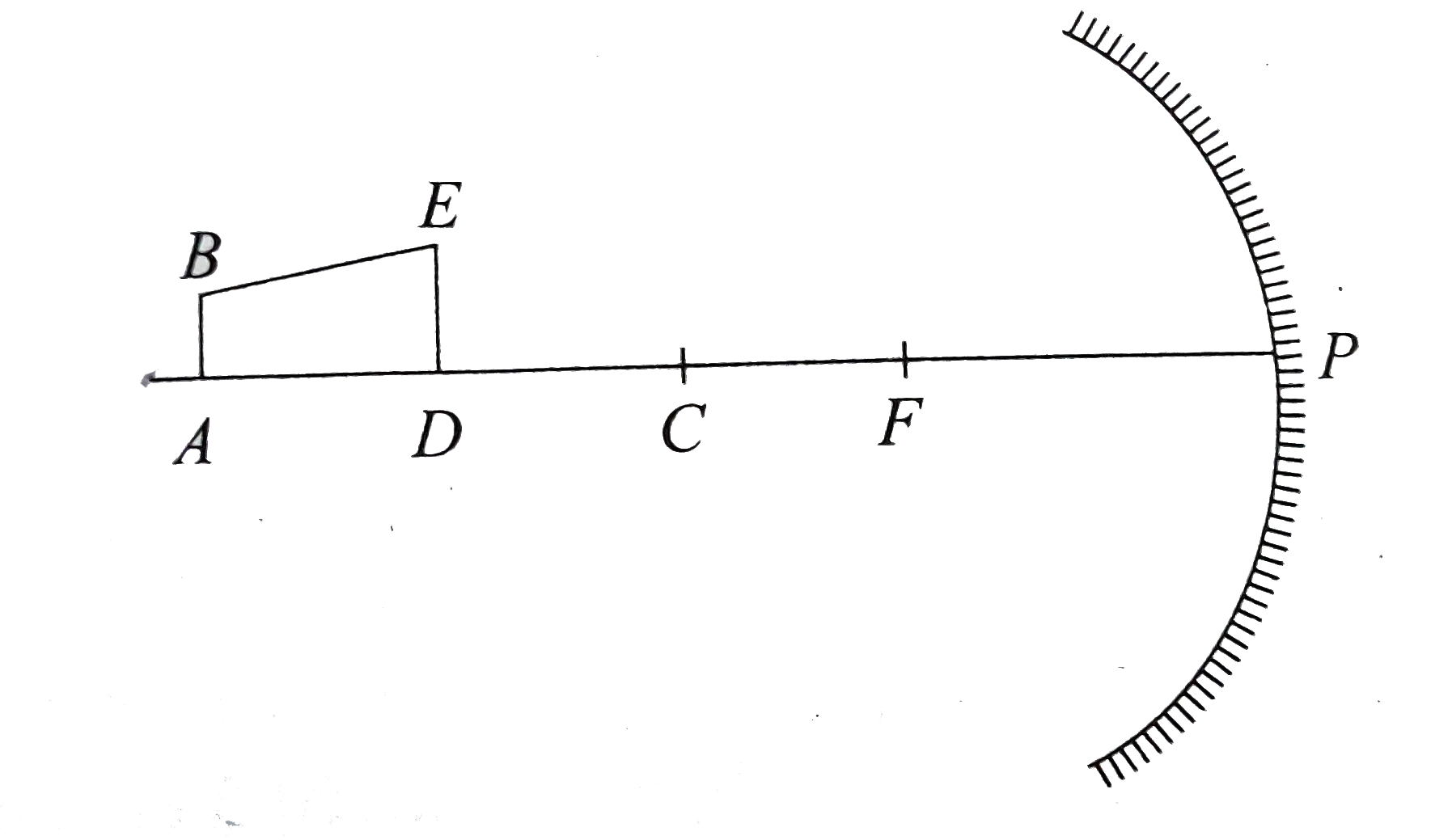Draw a ray diagram to show the formation of image by a concave mirror for an object beyond its centre of curvature. State three characteristics of the image.
To solve the problem of drawing a ray diagram for the formation of an image by a concave mirror when the object is placed beyond its center of curvature, we will follow these steps:
1. Draw the Concave Mirror:
- Start by drawing a concave mirror, which is a curved surface that bulges inward. Label the mirror as "M".
- Mark the principal axis, which is a straight line that runs horizontally through the center of the mirror.
2. Identify the Focus (F) and Center of Curvature (C):
- Mark the focus (F) of the mirror, which is located halfway between the mirror's surface and the center of curvature (C).
- The center of curvature (C) is the point where the radius of the mirror's curvature meets the principal axis.
3. Position the Object (O):
- Place the object (O) beyond the center of curvature (C) on the principal axis. This means the object is located further away from the mirror than point C.
4. Draw the Rays:
- Ray 1: Draw a ray from the top of the object (O) that travels parallel to the principal axis towards the mirror. When this ray hits the mirror, it reflects through the focus (F).
- Ray 2: Draw a second ray from the top of the object (O) that travels through the center of curvature (C). This ray will reflect back along the same path since it hits the mirror at the center of curvature.
5. Locate the Image:
- Extend the reflected rays backward (dashed lines) to find the point where they intersect. This intersection point is where the image (I) is formed.
- Mark this point as "I" on the principal axis.
6. Characteristics of the Image:
- The image formed is located between the focus (F) and the center of curvature (C).
- It is important to note the characteristics of the image formed by the concave mirror in this scenario.
Characteristics of the Image:
1. Diminished: The size of the image is smaller than the size of the object.
2. Real: The image can be projected on a screen since the rays converge at the image location.
3. Inverted: The image is upside down compared to the object.
- Start by drawing a concave mirror, which is a curved surface that bulges inward. Label the mirror as "M".
- Mark the principal axis, which is a straight line that runs horizontally through the center of the mirror.
- Mark the focus (F) of the mirror, which is located halfway between the mirror's surface and the center of curvature (C).
- The center of curvature (C) is the point where the radius of the mirror's curvature meets the principal axis.
- Place the object (O) beyond the center of curvature (C) on the principal axis. This means the object is located further away from the mirror than point C.
- Ray 1: Draw a ray from the top of the object (O) that travels parallel to the principal axis towards the mirror. When this ray hits the mirror, it reflects through the focus (F).
- Ray 2: Draw a second ray from the top of the object (O) that travels through the center of curvature (C). This ray will reflect back along the same path since it hits the mirror at the center of curvature.
- Extend the reflected rays backward (dashed lines) to find the point where they intersect. This intersection point is where the image (I) is formed.
- Mark this point as "I" on the principal axis.
- The image formed is located between the focus (F) and the center of curvature (C).
- It is important to note the characteristics of the image formed by the concave mirror in this scenario.
1. Diminished: The size of the image is smaller than the size of the object.
2. Real: The image can be projected on a screen since the rays converge at the image location.
3. Inverted: The image is upside down compared to the object.
Topper's Solved these Questions
- REFLECTION OF LIGHTBOOK - ICSECHAPTER - REFLECTION OF LIGHTEXERCISE - EXERCISE 7(B)
9 Videos
- PROPAGATION OF SOUND WAVES BOOK - ICSECHAPTER - PROPAGATION OF SOUND WAVES EXERCISE - EXERCISE -8(B) (Multiple choice type)
3 Videos
- SOUNDBOOK - ICSECHAPTER - SOUNDEXERCISE - TOPIC 2 Infrasonic and Ultrasonic Waves ( 3 Marks Questions)
3 Videos
Similar Questions
Draw a ray diagram to show the formation of image by a concave mirror for an object placed between its pole and focus. State three characteristics of the image.

View Solution
Draw a ray diagram to show the formation of the image as specified in the part a.
View SolutionDraw a ray diagram showing the formation of image of a point object by a plane mirror.
View SolutionDiscuss the properties of image formed by shown mirror of a real object place beyond centre of curvature

View SolutionDraw the image formed by a convex mirror when the object is kept in front of the mirror and write the characteristics of the image.
View Solution
Copy and complete the ray diagram to show the formation of the image of the object AB
View SolutionBy drawing a neat diagram show the formation of an image in a concave mirror when the object is between the pole and the principal focus of the mirror. State the characteristics of the image.
View SolutionAn object ABED is placed in front of a concave mirror beyond the center of curvature C as shown in figure., State the shape of the image.

View SolutionDraw ray diagrams showing the image formation by a convex mirror when an object is placed
(a) at infinity (b) at finite distance from the mirror
View Solution(a) Draw the ray diagram for the formation of image of an object by a convex mirror and use it (along with the sign convention) to derive the mirror formula.
(b) Use the mirror formula to show that for an object, kept between the pole and focus of a concave mirror the image appears to be formed behind the mirror.
View Solution
